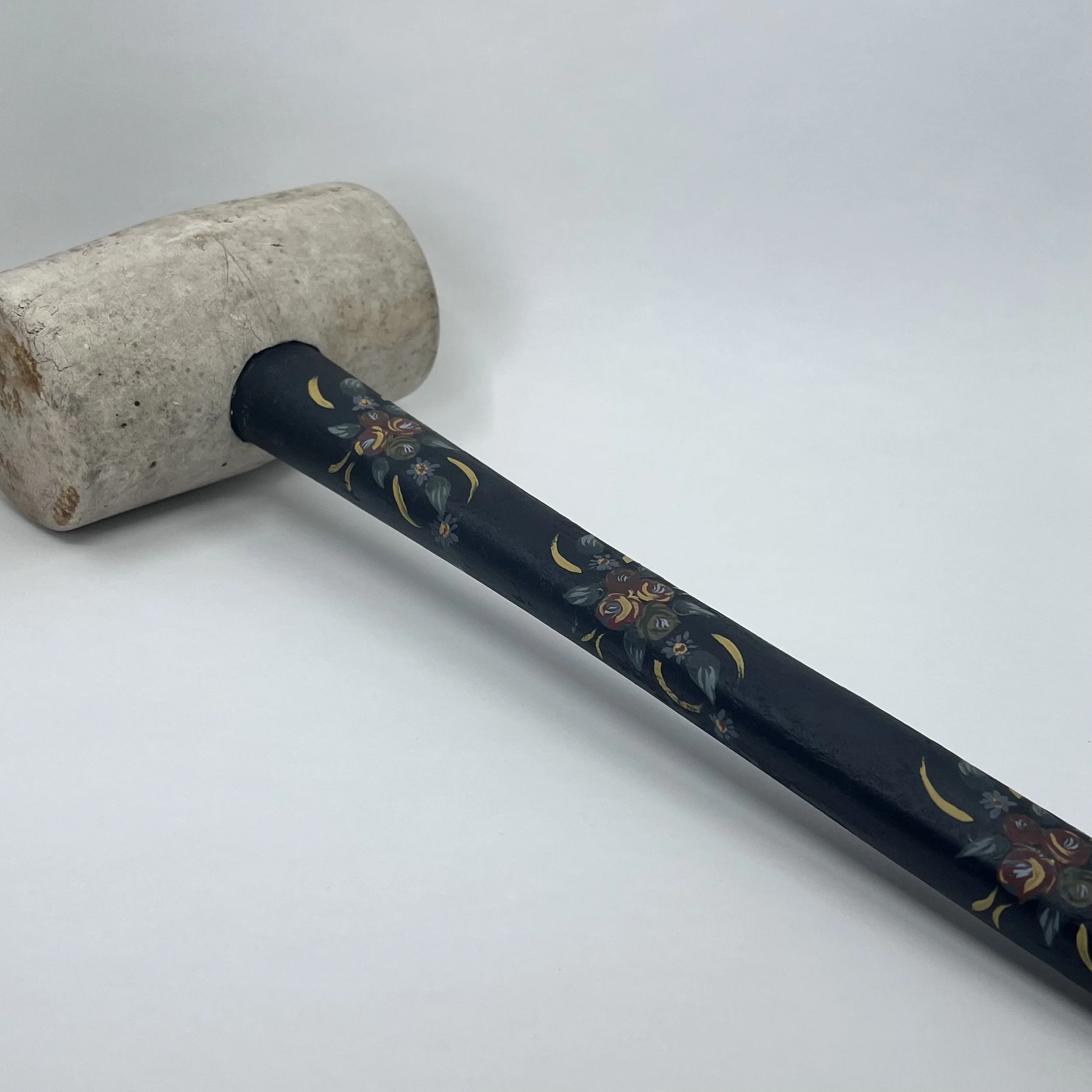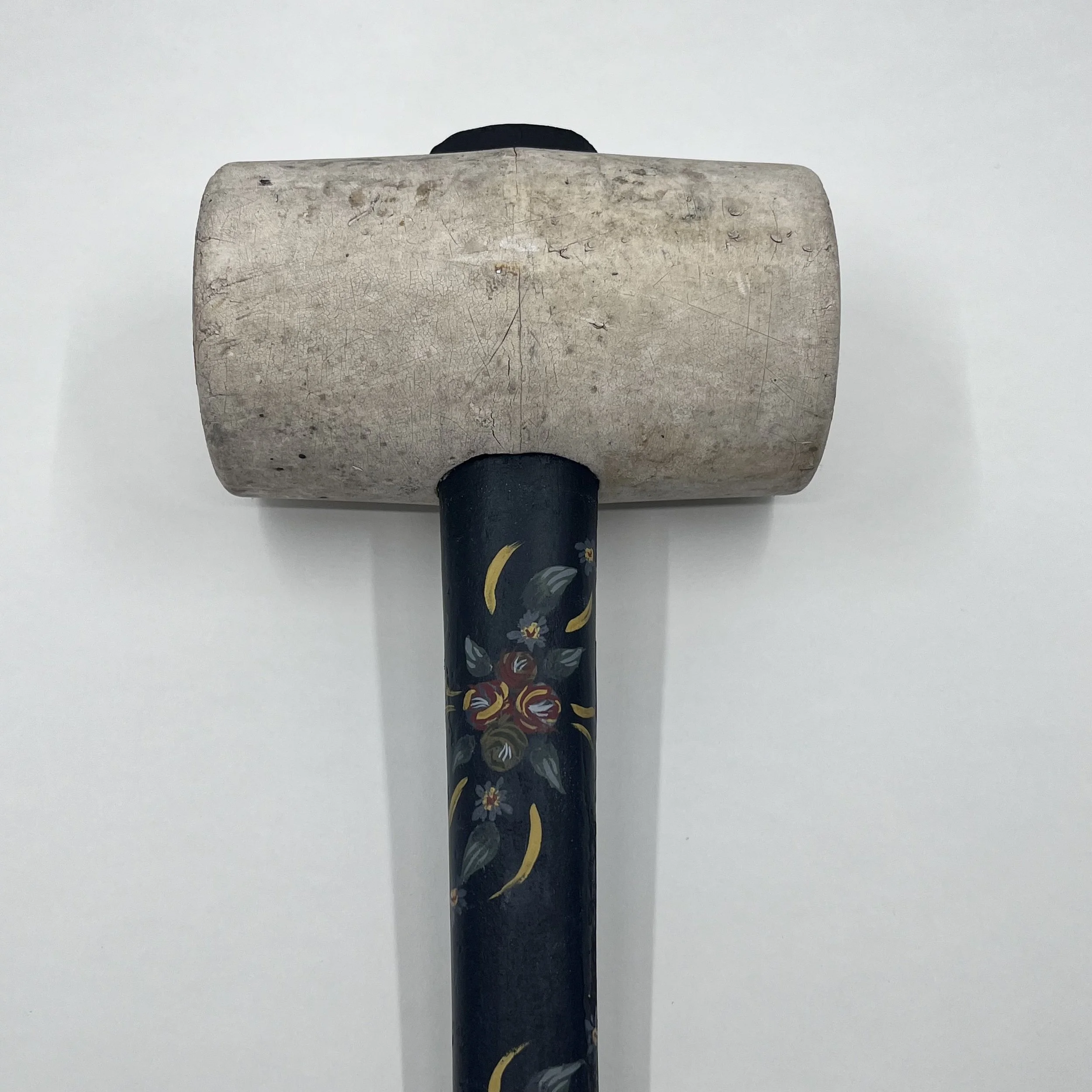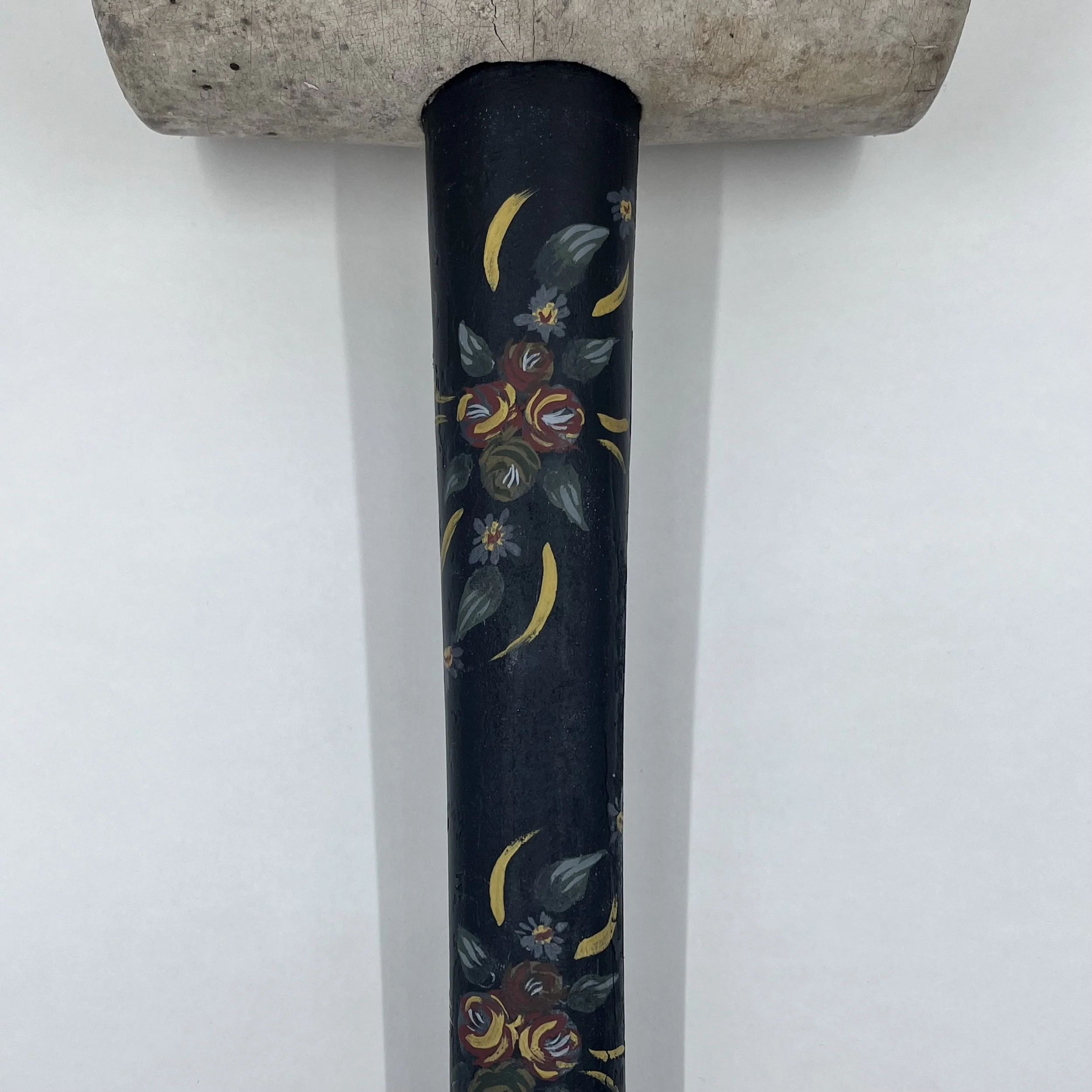Know Your Enemy
Mixed Media, 2025
While exploring my family history, I discovered that we are descended from George Mellor, a Luddite leader tried for the murder of a factory owner in 1812. The Luddites—highly skilled weavers—fought against the mechanisation of their trade, resisting forces that threatened to strip them of their livelihoods. What’s striking is how relevant their struggle remains today.
Once again, we’re being told to fear the machines. But it’s not the machines we should fear—it’s the people who control them. Those who seek only to profit from others’ labour, who exploit and erase the humanity from work itself. The Luddite resistance isn’t just a chapter in history; it’s an ongoing battle, a cycle that keeps repeating between the haves and the have-nots.
This sculpture, Know Your Enemy, is a found rubber mallet, its handle decorated in the traditional Roses and Castles style, painted in military tones taken from hobbyist Airfix models. The use of military colours reflects both the impersonal forces of authority and control that the Luddites resisted, and the quiet defiance that lingers in everyday objects. The rubber mallet isn’t meant to smash things up—it holds intention, not destruction. And that intention, like the Luddites themselves, has been rewritten through history. The word Luddite has come to mean backward, anti-progress—another example of how power reshapes narratives to serve its own ends.
But what if we reclaim it?
This mallet embodies the duality of force and fairness, of beauty and strength. It carries with it a quiet but steady defiance. It reminds us that the fight for dignity, for the right to survive with integrity, is timeless. And that resistance—like history itself—can be found in the most unexpected places.


